4.5: Monopolistic Competition
1/11
Earn XP
Description and Tags
Flashcards covering key concepts and definitions related to monopolistic competition from the lecture notes.
Name | Mastery | Learn | Test | Matching | Spaced |
|---|
No study sessions yet.
12 Terms
What are the 6 key characteristics of monopolistic competition?
D > MR, zero economic profit in the long-run, differentiated products, some control over price, easy entry and exit, and substantial non-price competition.
What role does advertising play in monopolistic competition? More specifically, how does it affect demand and demand elasticity?
Advertising is used to increase demand and make demand more inelastic due to product differentiation.
In the long run, do monopolistic competition firms make any economic profit? Why or why not?
No, due to easy entry and exit into the market.
What happens to demand for existing firms when new firms enter a monopolistic competition market?
The demand for existing firms falls as new firms enter, introducing more close substitutes into the market.
How does the demand curve behave for a monopolistically competitive firm compared to a perfectly competitive firm?
The demand curve for a monopolistically competitive firm is downward sloping instead of horizontal (perfectly elastic), reflecting some degree of market power.
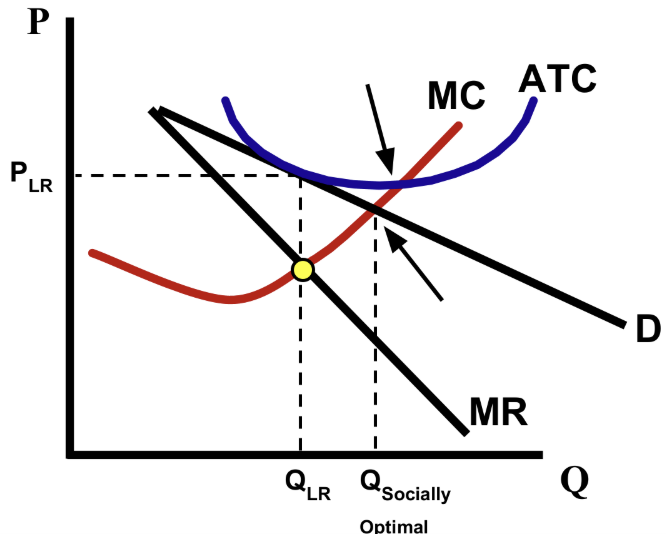
Define 'excess capacity' in the context of monopolistic competition.
Excess capacity occurs when a firm could produce at a lower cost (minimum ATC) but chooses not to, resulting in underproduction to maximize profits.
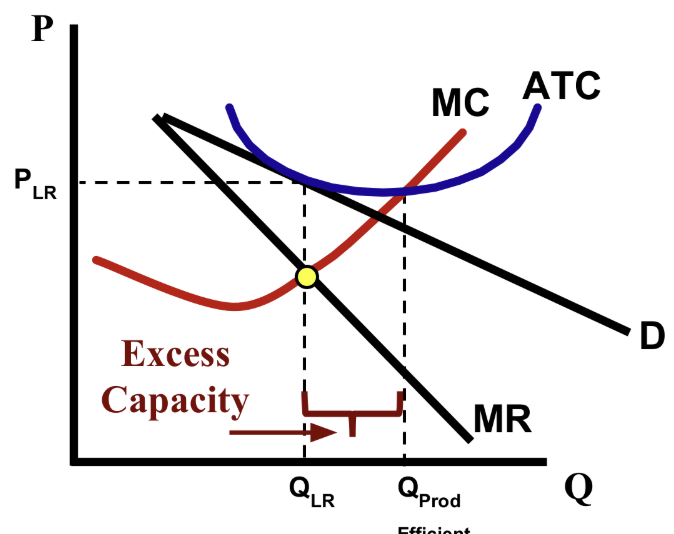
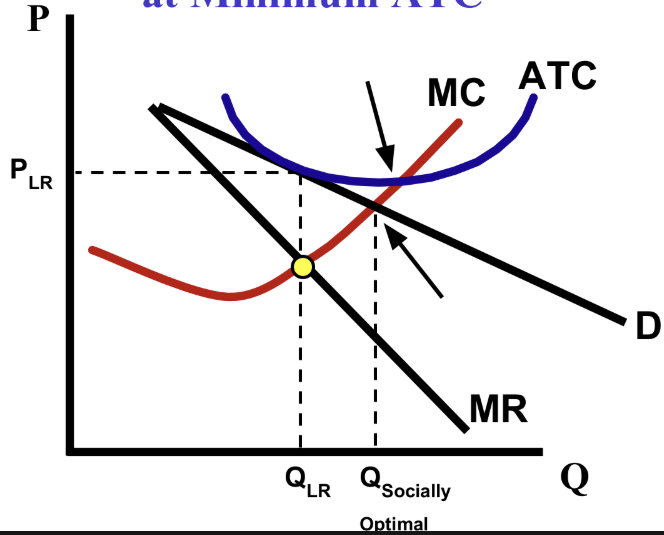
Are monopolistically competitive firms allocatively and productively efficient? Why or why not?
No, they are not allocatively efficient since P ≠ MC and not productively efficient because they do not produce at minimum ATC.
What is the relationship between marginal revenue (MR) and demand in monopolistic competition?
In monopolistic competition, MR < Demand due to price setting/making behavior.
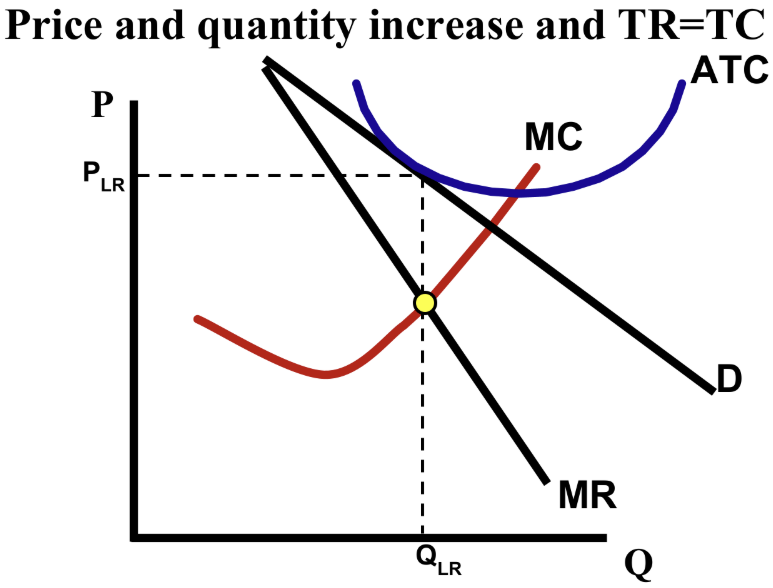
What happens to demand when firms experience short-run losses in monopolistic competition?
Firms exit the market, which increases demand for the remaining firms.
What is the result of short-run profits for firms in a monopolistically competitive market?
Short-run profits attract new firms to enter the market, decreasing demand for existing firms.
During which time period (short-run or long-run) do monopolistically competitive firms make economic profits?
The short-run.
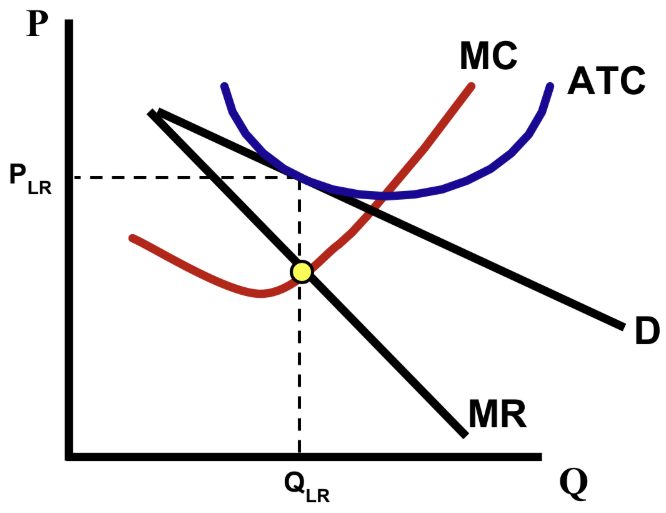
In the short-run, a monopolistic competition graph is the same as a monopoly graph. Where is the long-run equilibrium for monopolistic competition?
Quantity where MR = MC up to Price = ATC